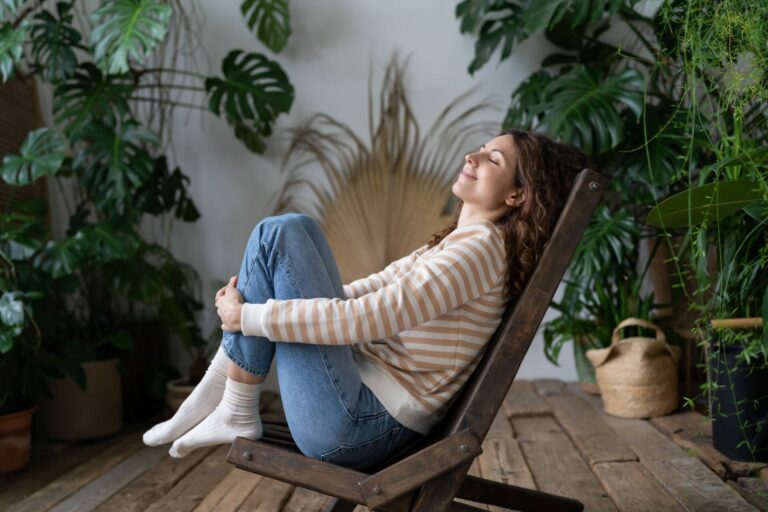Is Reaching a Calm State the Goal of Coping Skills for Children?
By Sarah Earles, MS, LPC, NCC | April 05, 2024
Caregivers, parents, and professionals often encourage children to practice their coping skills in order to stay calm. But is reaching a calm state really the goal of utilizing coping skills… or is there more?
Coping skills are often equated with calmness, but this is a misnomer. Coping does not equal calm. Coping means regulating, and regulating is about connection, connection to others and connection to self (Dion, 2022). As Robyn Gobbel (2023) writes, regulation is about being authentic and congruent. It is about being able to be present with big emotions in order to act in safe, wise ways. It is about children being able to make good decisions, decisions of which they can be proud, rather than acting impulsively. Is the goal of regulation just good behavior? No, it’s about the whole child in relation to self and others.
So if regulation is the point of coping skills, what kind of coping skills work? Good question. Coping skills that help children with regulation are those that help them be present in the moment, feeling all their physical and mental sensations (Dion, 2022). Specific skills may include 5-4-3-2-1 mindfulness and breathing (Smith, 2018). Moving the body through activities like dance or engaging the senses through mediums such as hard peppermint candies are other intervention ideas (Gobbel, 2023). As the body regulates, children may be more receptive to connection to caregivers through engagement in appropriate physical contact (e.g. hugs) or even conversation. This connection can grow their self-regulation skills.
Coping does not mean calm. Regulation does not mean calm. Coping skills help with regulation. Regulation helps with connection. Adults who connect with children to co-regulate and practice coping skills help children learn to self-regulate, and that is a powerful tool for them as they grow older.
Caregivers, parents, and professionals often encourage children to practice their coping skills in order to stay calm. But is reaching a calm state really the goal of utilizing coping skills… or is there more?
Coping skills are often equated with calmness, but this is a misnomer. Coping does not equal calm. Coping means regulating, and regulating is about connection, connection to others and connection to self (Dion, 2022). As Robyn Gobbel (2023) writes, regulation is about being authentic and congruent. It is about being able to be present with big emotions in order to act in safe, wise ways. It is about children being able to make good decisions, decisions of which they can be proud, rather than acting impulsively. Is the goal of regulation just good behavior? No, it’s about the whole child in relation to self and others.
So if regulation is the point of coping skills, what kind of coping skills work? Good question. Coping skills that help children with regulation are those that help them be present in the moment, feeling all their physical and mental sensations (Dion, 2022). Specific skills may include 5-4-3-2-1 mindfulness and breathing (Smith, 2018). Moving the body through activities like dance or engaging the senses through mediums such as hard peppermint candies are other intervention ideas (Gobbel, 2023). As the body regulates, children may be more receptive to connection to caregivers through engagement in appropriate physical contact (e.g. hugs) or even conversation. This connection can grow their self-regulation skills.
Coping does not mean calm. Regulation does not mean calm. Coping skills help with regulation. Regulation helps with connection. Adults who connect with children to co-regulate and practice coping skills help children learn to self-regulate, and that is a powerful tool for them as they grow older.
References
Dion, L. (2022, July 1). How trying to get calm gets in the way of regulation. Synergetic Play Therapy Institute. https://synergeticplaytherapy.com/blog-how-trying-to-be-calm-gets-in-the-way-of-regulation/
Gobbel, R. (2023, January 13). Regulated does not equal calm {Ep 31}. Robyn Gobbel. https://robyngobbel.com/lisadion/
Smith, S. (2018, April 10). 5-4-3-2-1 Coping technique for anxiety. University of Rochester Medical Center. https://www.urmc.rochester.edu/behavioral-health-partners/bhp-blog/april-2018/5-4-3-2-1-coping-technique-for-anxiety.aspx
References
Dion, L. (2022, July 1). How trying to get calm gets in the way of regulation. Synergetic Play Therapy Institute. https://synergeticplaytherapy.com/blog-how-trying-to-be-calm-gets-in-the-way-of-regulation/
Gobbel, R. (2023, January 13). Regulated does not equal calm {Ep 31}. Robyn Gobbel. https://robyngobbel.com/lisadion/
Smith, S. (2018, April 10). 5-4-3-2-1 Coping technique for anxiety. University of Rochester Medical Center. https://www.urmc.rochester.edu/ behavioral-health-partners/bhp-blog/april-2018/5-4-3-2-1-coping-technique-for-anxiety.aspx




